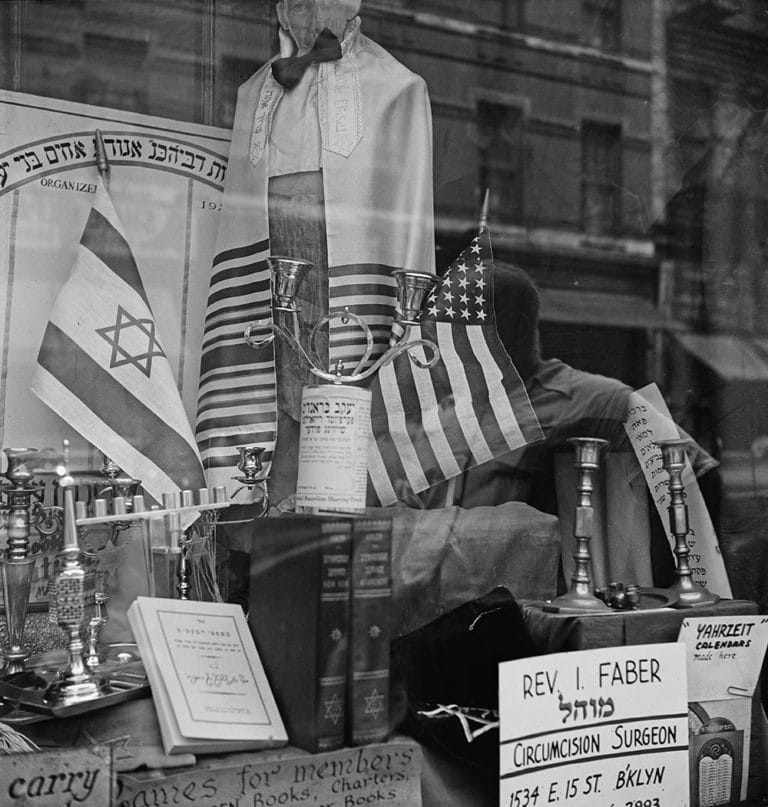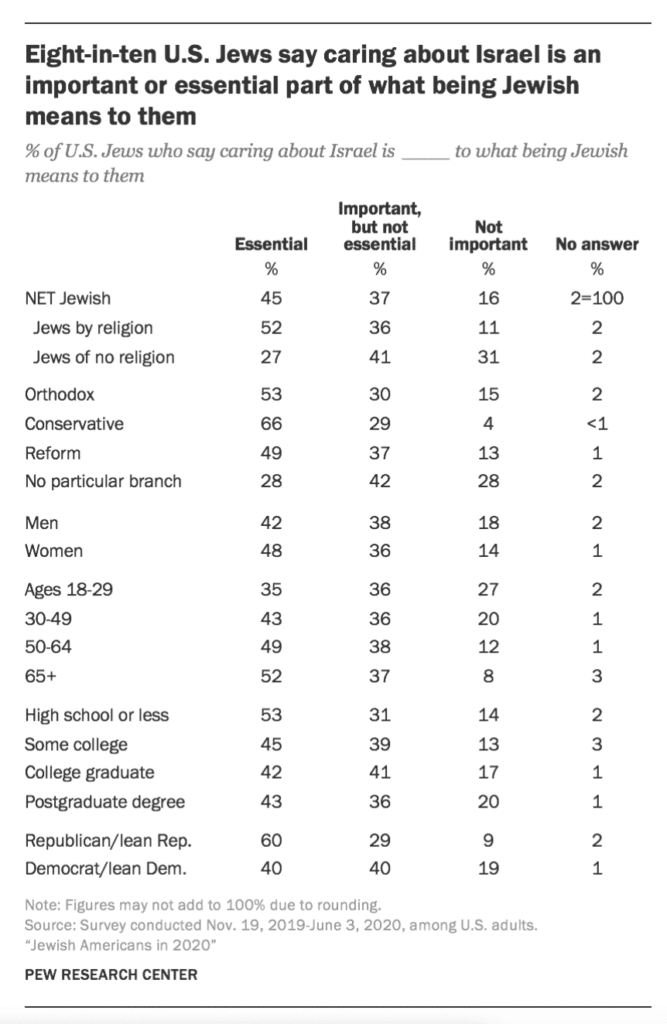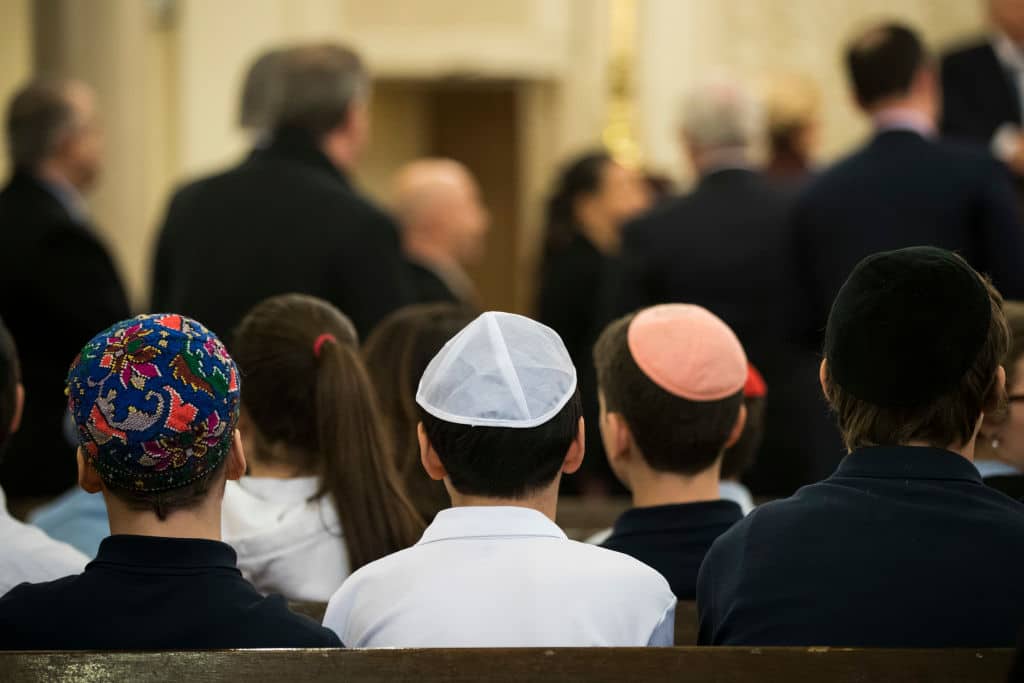
Listen to this article:
Did you know that the U.S. has the largest Jewish community outside of Israel? Americans account for 39% of the world’s total Jewish population, with an additional 46% of the world’s population living in Israel. Any changes in the habits of American Jews will have profound impacts on Israel and for Jews around the world.
American Jews are becoming more Orthodox, and yet, less religious. American Jews are solidly Democrats, but not actually. The vast majority feel attached to Israel, yet there is a growing generational divide. We are becoming more diverse, and also at the same time becoming increasingly siloed. These are just a few of the major takeaways from Pew’s 2020 survey of American Jews.
As educators and journalists, we wanted to dig into the data. We’re going beyond the headlines to get to the heart of the matter– how will these changing trends and demographics affect the future of Judaism?
Orthodoxy and secularism are growing
Among Jews under 30, there is a growing schism– they’re either becoming more religious, or not religious at all.
Orthodoxy is making major gains. Among Jews ages 18 to 29, 17% self-identify as Orthodox, compared with just 3% of Jews 65 and older.
Many Jewish Americans say they engage in cultural Jewish activities such as enjoying Jewish foods, visiting Jewish historical sites and reading Jewish literature https://t.co/J2pfYttnpP pic.twitter.com/vM7OsZkdVN
— Becka Alper (@balper) May 11, 2021
Meanwhile, the data shows Reform and Conservative movements are losing young adult congregants. The percentage of people self-identifying as Reform or Conservative is shrinking, down to around four-in-10 Jewish adults under the age of 30, compared to nearly 70% of Jews aged 65 and older.
Despite this growing gap in religious practice, both religious and non-religious Jews are still expressing their Jewish identity in many of the same ways.
Jews ages 18 to 29 are just as likely as those 65 and older to say they attend religious services at least monthly, and about as likely to say they believe in God or some other higher power https://t.co/0YDHmrpG63 pic.twitter.com/2qT59gzTY0
— Becka Alper (@balper) June 8, 2021
“Many Orthodox Jews and Jews of no religion take part in the same cultural experiences,” Dr. Becka Alper, lead researcher of the survey, told us. “We find broadly Jews of no religion share the same interests.”
These interests include Shabbat meals, Israeli music, Jewish literature, observing holidays, etc…

We are siloed despite becoming more diverse
We may be sharing the same interests and Jewish experiences but we aren’t sharing them with Jews that aren’t like us.
American Jews are very much stuck in their own bubble and rarely, if ever, get out of it. Half of Orthodox Jews say that they have “not much” or “nothing at all” in common with Reform Jews, and Reform Jews very much feel the same way.
In fact, the study included the following observation: “Orthodox and Reform Jews see little in common with one another; Jews who don’t affiliate with any branch of Judaism see more in common with Muslims than with Orthodox Jews.”
Meanwhile, American Jews are becoming more racially diverse. Eight percent of total U.S. Jewry now identifies as non-White, and that figure nearly doubles when looking at Jews 18 to 29. The survey also found that 17% of U.S. Jewish adults live in a household where at least one person is Hispanic, Black, Asian, another race or multiracial.
Israel still matters
A majority of American Jews (58%) feel at least “somewhat attached” to Israel, and that number increases significantly (79%) for those who have visited the Jewish state. Around 10% of Jewish Americans say they support the boycott, divest, sanction (BDS) movement.

There are significant gaps in Israel affinity amongst age, religious practice and travel to the country. Pew found that the highest level of affinity towards Israel (90%) came from people “who have lived in Israel or been there more than once,” the lowest affinity rate is amongst unaffiliated Jews. Nearly 60% of Jews with “no particular denominational affiliation” say they are either “not too” or “not at all” emotionally attached to Israel.
Jewish Americans 65+ are more likely than Jewish adults under 30 to say that caring about Israel is essential to what being Jewish means to them, to follow news about Israel at least somewhat closely https://t.co/2LDQAOrPvJ pic.twitter.com/AoPa9F4mlt
— Becka Alper (@balper) May 24, 2021
What does this all mean for the future of Judaism?

“One big picture takeaway is that we have in many ways, the adult population looks like it did in 2013 … but we also see some signs of potential change,” says Dr. Alper. Adding: “There’s some things going on among younger Jews.”
If these trends continue, Judaism 50 years from now in America could be more secular and more Orthodox all at the same time.
“This survey is a snapshot in time so it is very hard to say what will happen in the future,” Dr. Alper warns. “To say what may happen in the future is difficult to do, but we will see some differences.”
Of note, Dr. Alper points out that attitudes towards Israel will continue to shift and that the increase of diversity in the U.S. will only grow.
However the biggest takeaway may be what Dr. Alper calls the growing “religious divergence.”
“There’s a sizable share identifying as religious and a larger share that doesn’t at all, the middle is shrinking,” she said.
Judaism without a middle leaves out many of our largest denominations. The own survey concluded:
“Meanwhile, the Reform and Conservative movements, American Judaism’s largest branches, seem to be losing ground with younger generations. About four-in-ten Jews ages 18 to 29 identify as Reform (29%) or Conservative (8%), compared with seven-in-ten Jews who are 65 and older (44% Reform, 25% Conservative).”
“The younger Jews see themselves as more Orthodox and secular,” Dr. Alper concluded.
The bottom line
Relations with Israel and the U.S. Jewish community are important. In fact, Prime Minister Naftali Bennett said the following in a speech years ago:
“I think this is one of the greatest challenges of our generation. It’s got to be at the top of our list. There’s an Atlantic-Jewish chasm growing between Israelis and Jews in the United States.”
This also leads to profound funding questions. Ahead of the survey’s release, Yale researcher Edieal J. Pinker wrote the following about the changing demographics:
“This is important information if you are running a Jewish nonprofit that’s active in trying to develop the health of the community,” Pinker says. “If you’re unaware of these trends, then you’re flying blind.”
Originally Published Jun 15, 2021 12:03AM EDT


